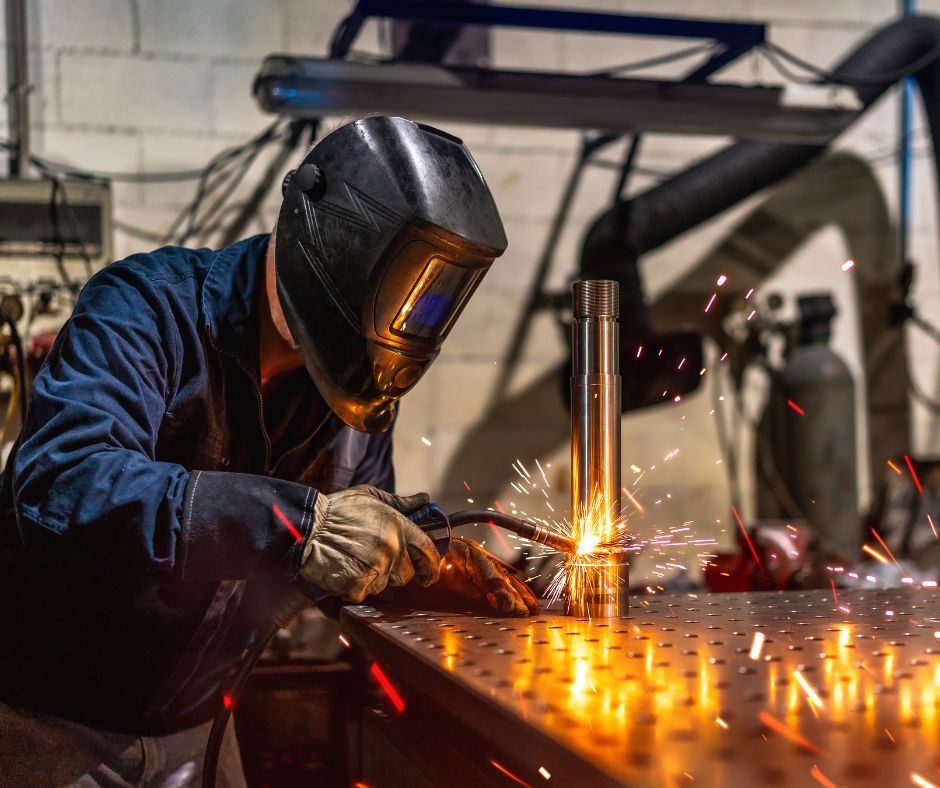Welding is often considered one of the most hands-on, creative, and essential trades. It is used to build everything from towering skyscrapers to custom metal art. Whether you’re curious about welding as a new hobby or exploring it as the first step in a skilled trade career, this beginner’s welding guide will walk you through the basics.
At Stratford Career Institute, we offer a convenient and flexible introductory welding course that may help you better understand the fundamentals of this craft and decide if it’s a path you’d like to explore further.
Read this guide to learn the essentials of welding for beginners, including how to learn welding and other basics.
What Is Welding?
Welding is the process of fusing two or more pieces of metal using heat, pressure, or both. It’s an essential skill in the construction, automotive, aerospace, shipbuilding, and manufacturing industries.
What Equipment Do You Need?
Starting your welding journey means gathering the right tools. Having the proper gear can make learning easier, improve the quality of your welds, and keep you safe along the way. Here’s what you’ll typically need as a beginner:
- Welding machine. For most beginners, a MIG welder is a great choice. It’s user-friendly and works well for basic projects. As you gain experience, you might explore stick or TIG welding machines for different materials and techniques.
- Welding helmet. Choose an auto-darkening helmet that adjusts to the brightness of the arc. It protects your eyes from UV radiation and lets you see clearly during work.
- Protective clothing. A flame-resistant welding jacket or apron protects your arms and body from sparks and heat.
- Welding gloves. Thick, heat-resistant gloves are essential to shield your hands from heat, UV rays, and flying sparks. Look for gloves that offer both protection and flexibility.
- Chipping hammer and wire brush. These tools help you clean your welds by removing slag and smoothing out the surface.
- Angle grinder. A grinder is handy for prepping metal surfaces before welding and finishing them afterward. They are also great for cutting or smoothing metal.
- Measuring tools. A tape measure, square, and marking tool will help you accurately measure, align, and mark your materials before making any cuts or welds.
- Ventilation equipment. Welding produces harmful fumes. If you’re working indoors, use a fan or fume extractor to keep the air safe.
This list covers the basics, but your toolkit may also grow as you grow your skills. Starting with the right equipment lays the foundation for safe, confident welding practice.
Prioritizing Safety: Welding Tips for Beginners
Welding is a powerful and rewarding skill, but it comes with real risks. That’s why safety should always come first when you’re starting. Here are common safety tips regarding welding for beginners.
- Wear protective gear. Always wear a welding helmet, flame-resistant clothing, gloves, and safety boots. Avoid synthetic fabrics that can melt and cause burns.
- Work in a safe environment. Make sure your workspace is clean, dry, and well-ventilated. Welding can produce toxic fumes, so good airflow is essential.
- Check for fire hazards. Sparks can fly far. Remove flammable items from your workspace and keep a fire extinguisher nearby.
- Mind your surroundings. Welding arcs can damage the eyes of people nearby. Use welding curtains or shields to protect others if you’re not working alone.
- Never weld without training. Take time to understand your equipment and welding methods before starting.
Keeping safety in mind protects you from injury and sets you up for better welding habits.
How to Learn Welding
You don’t need a college degree to become a welder, but you do need training. Welding is a hands-on profession. Employers typically look for candidates with proven skills, certifications, or both. How you gain those skills can vary depending on your goals.
Some people start with a formal trade school or technical college program offering in-depth training, equipment access, and certification exam preparation. Others might begin with an apprenticeship. Some start with an introductory course to get a feel for the trade before committing to more advanced programs.
If you do decide to pursue welding professionally, you’ll likely need:
- Hands-on experience through a training program or apprenticeship,
- Certification, and
- A solid understanding of safety procedures and welding codes.
From there, you can explore roles in construction, manufacturing, repair work, and more. Welding may be physically demanding, but it’s also a skill-based trade with steady demand and room for growth, especially for those who continue learning and specialize in advanced techniques.
Start Exploring Welding Basics with Stratford
Stratford Career Institute offers a convenient and affordable introductory welding course for beginners. You can study from home, at your own pace, and start learning the fundamentals, such as welding types, tools, safety, and terminology.
Remember, our course is meant to help you explore your interest in welding. It does not offer certification or qualify you for employment, but it can be a first step toward further training or hobby welding.
Want to learn more about welding tips for beginners? Take a look at Stratford Career Institute’s Welding course and see if it’s the right way to begin your journey.


